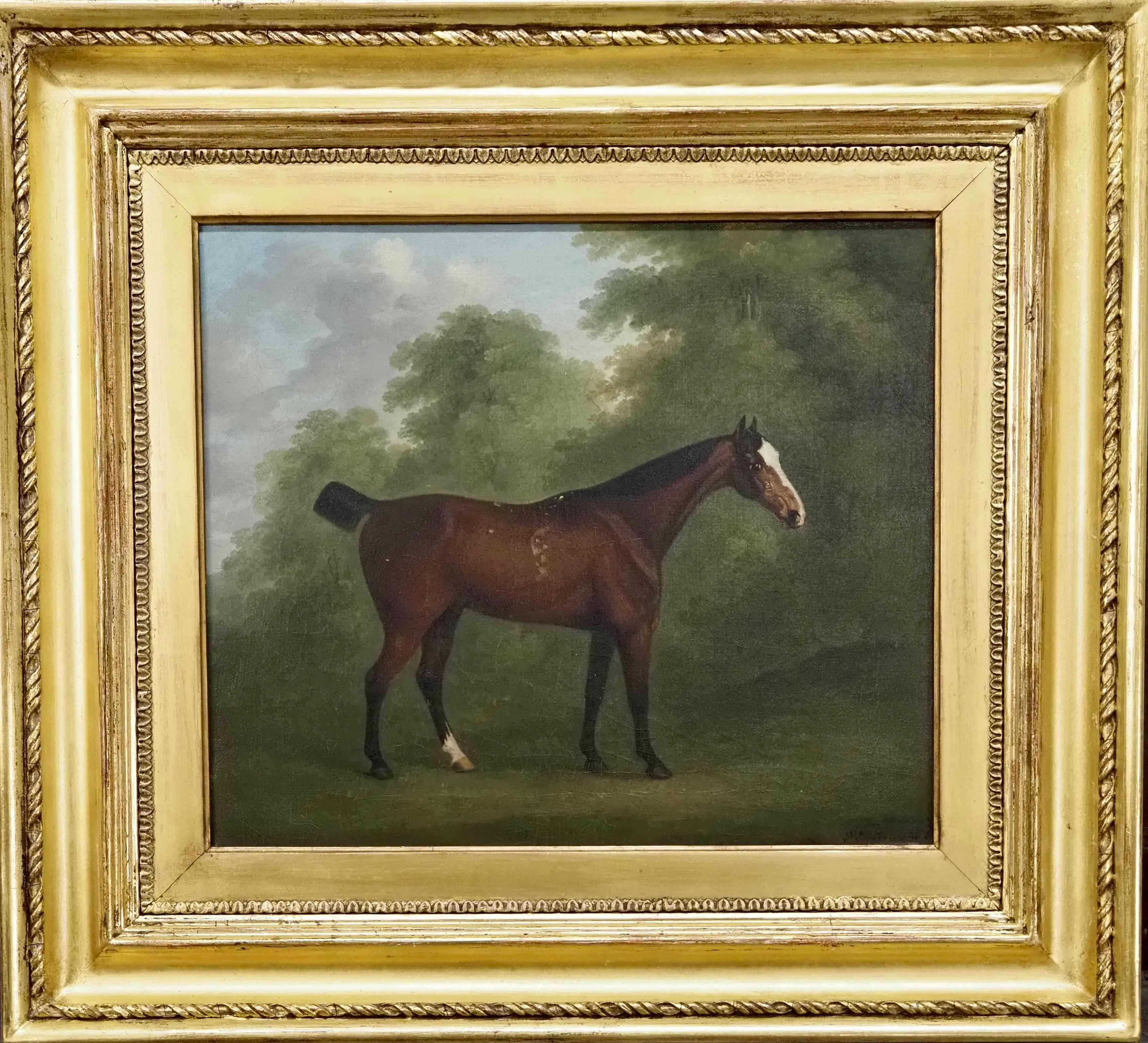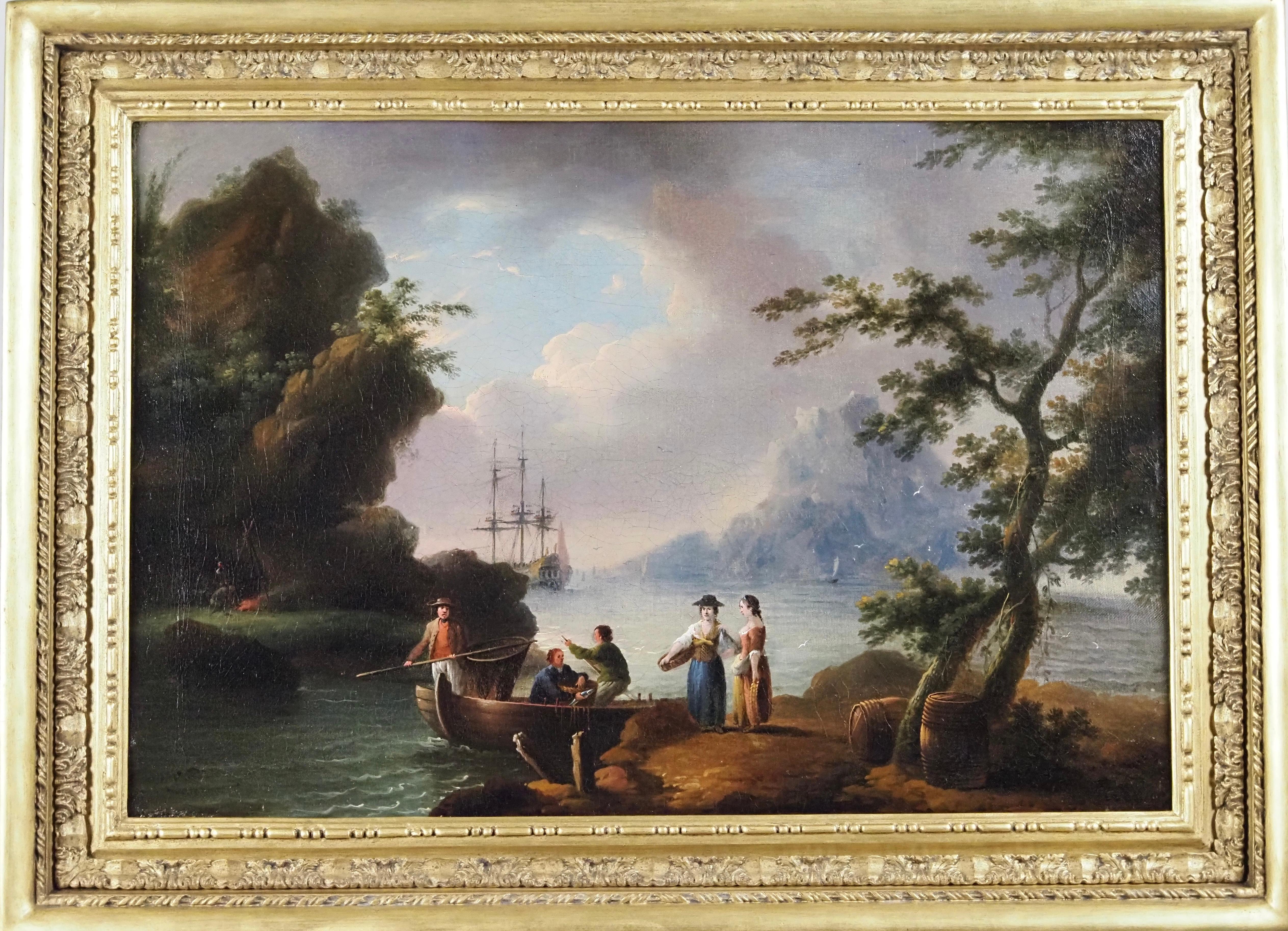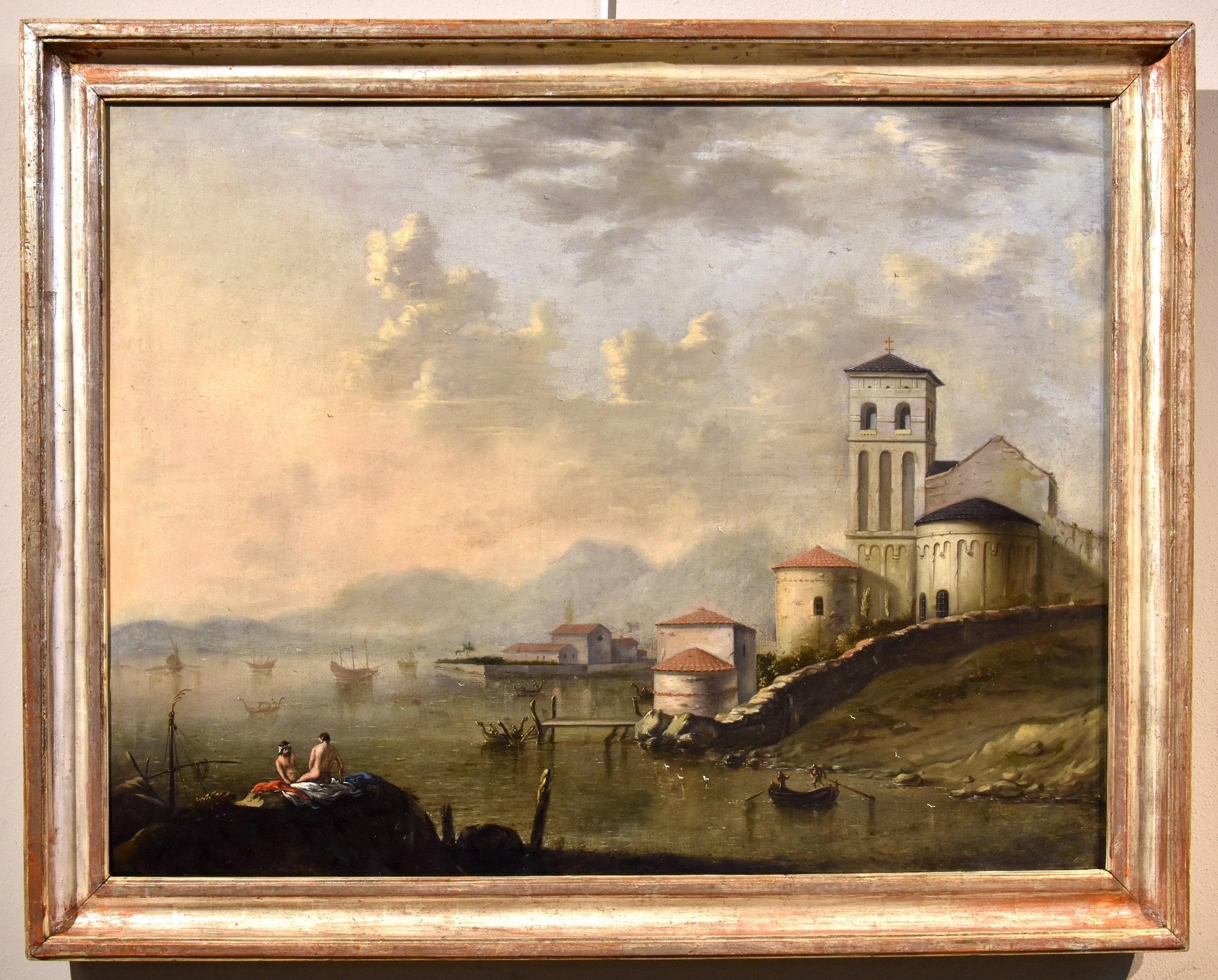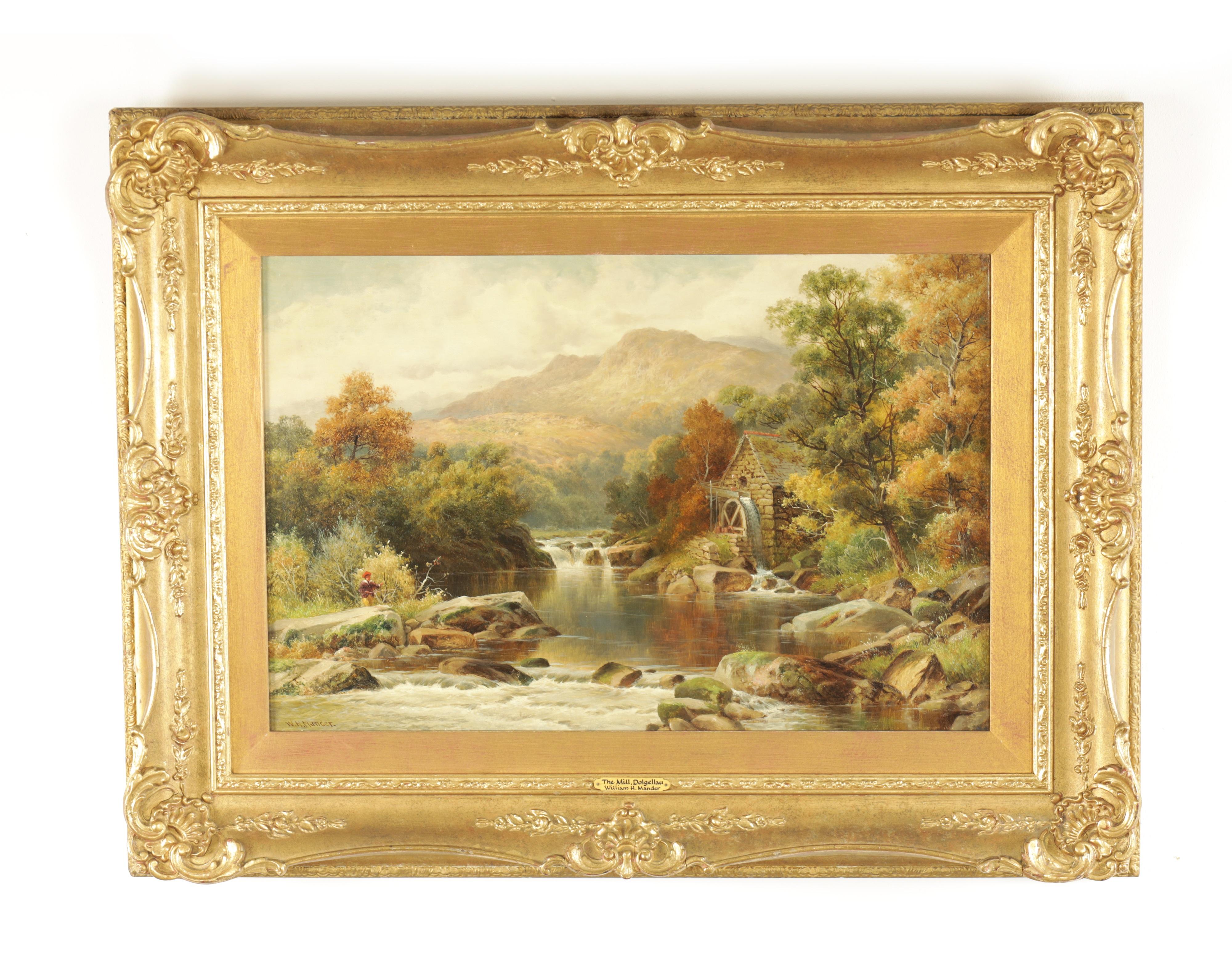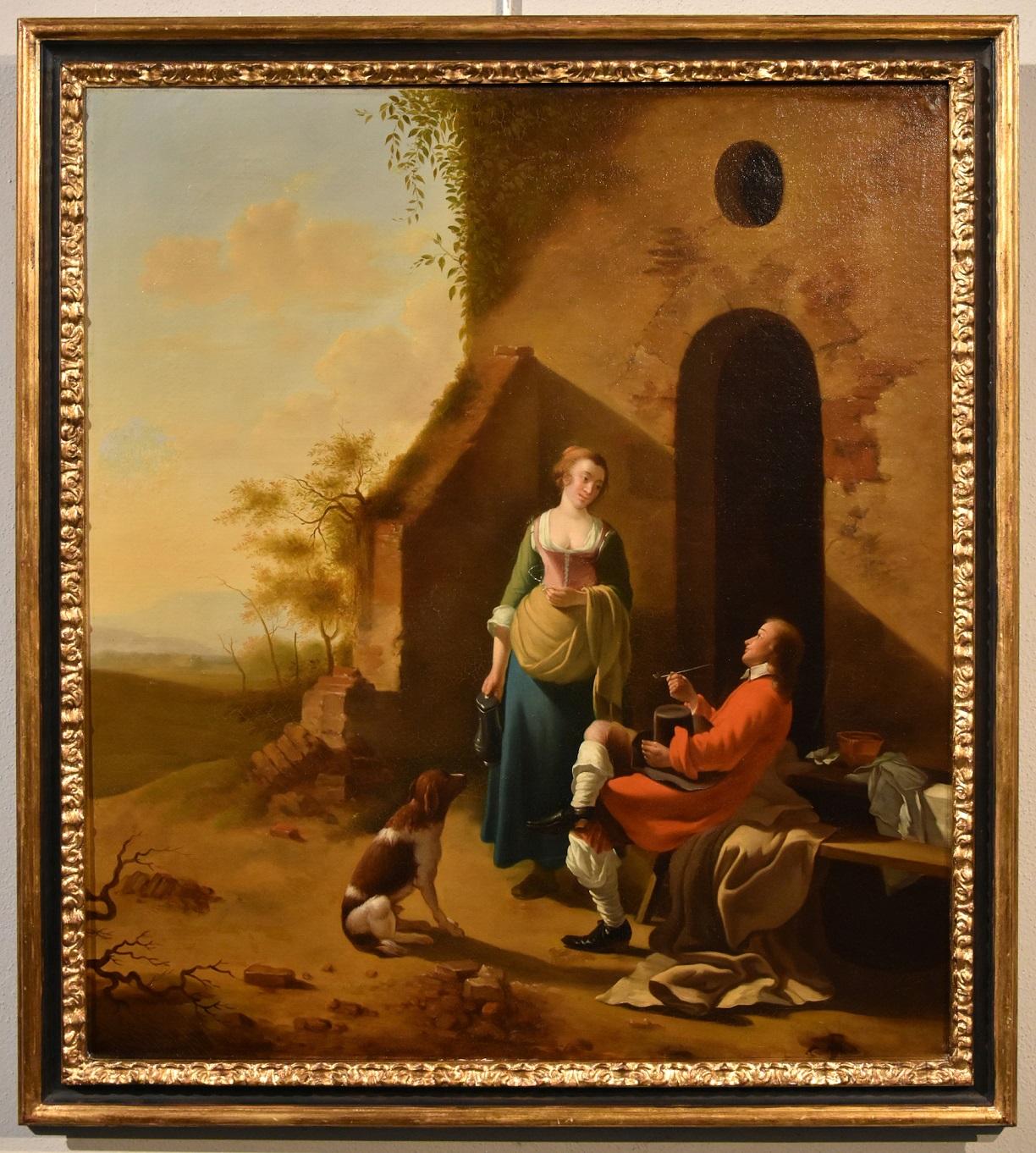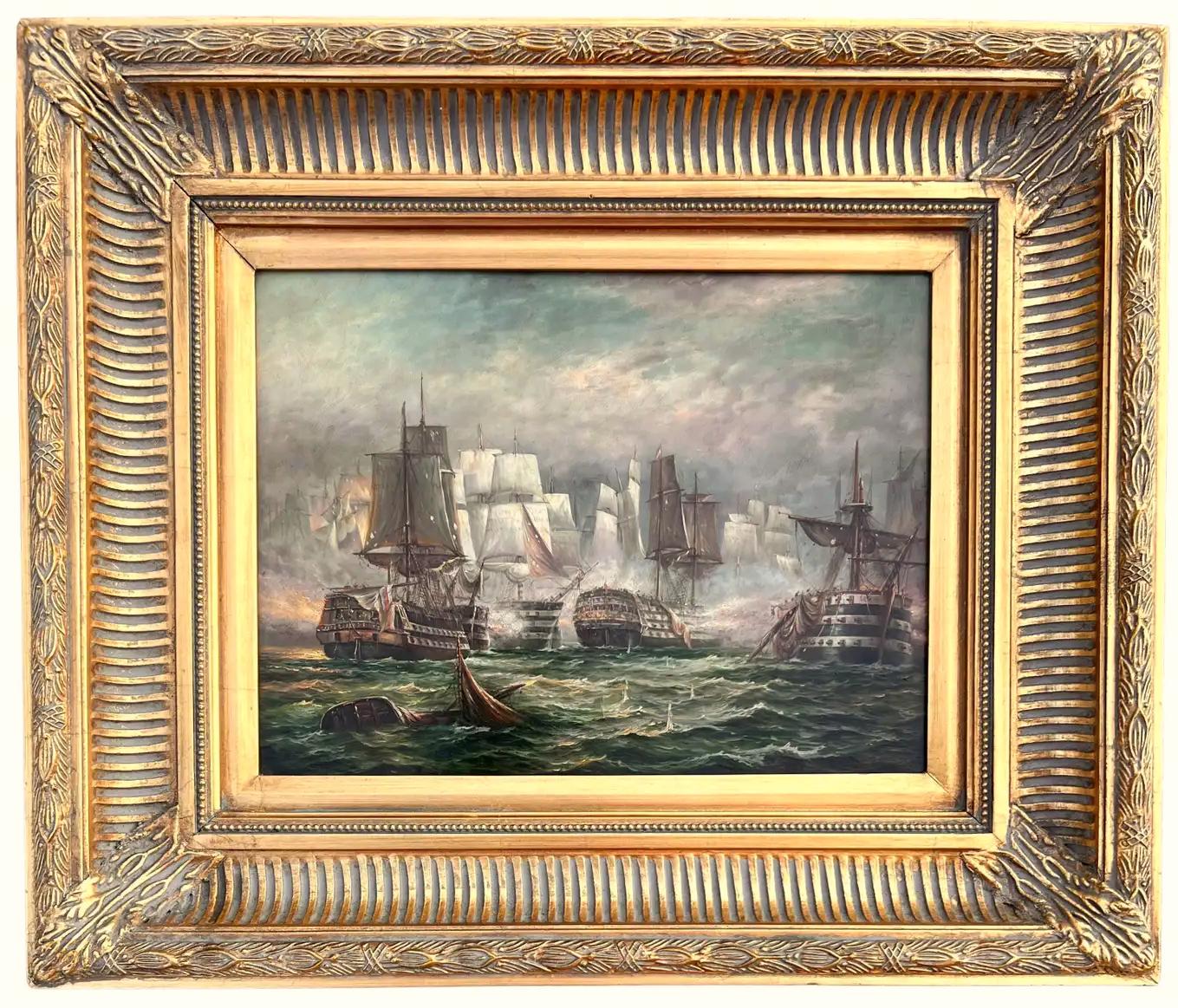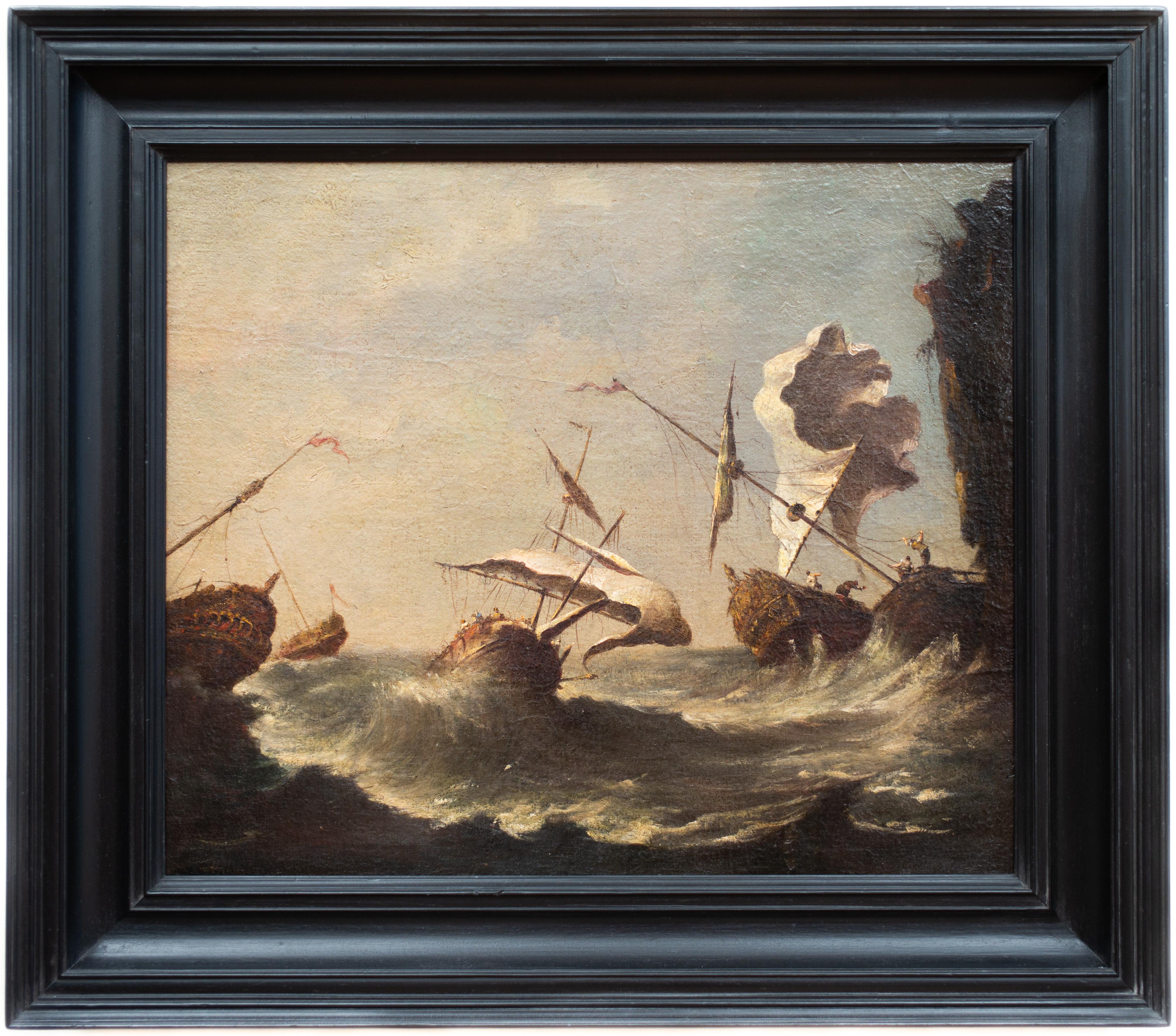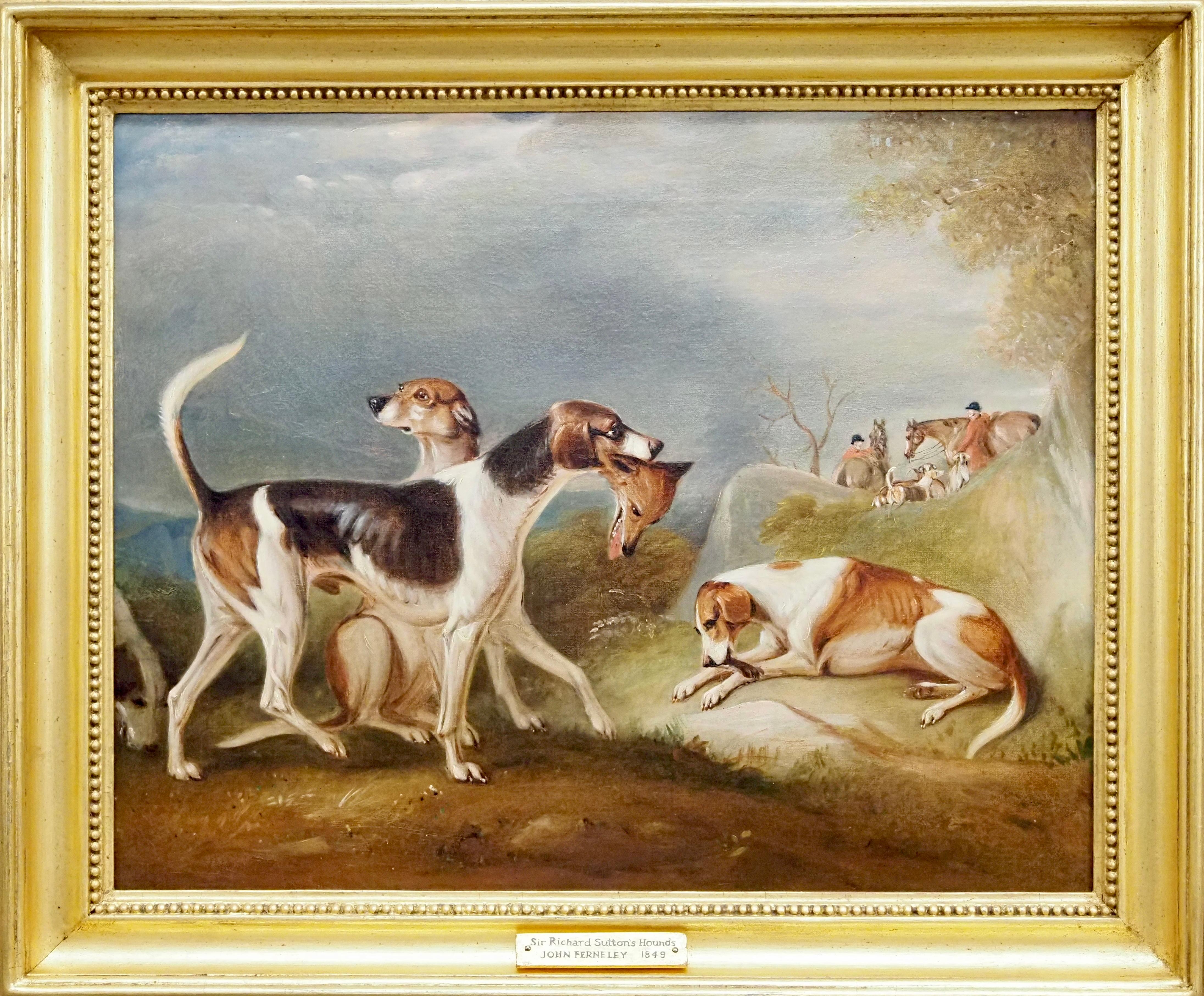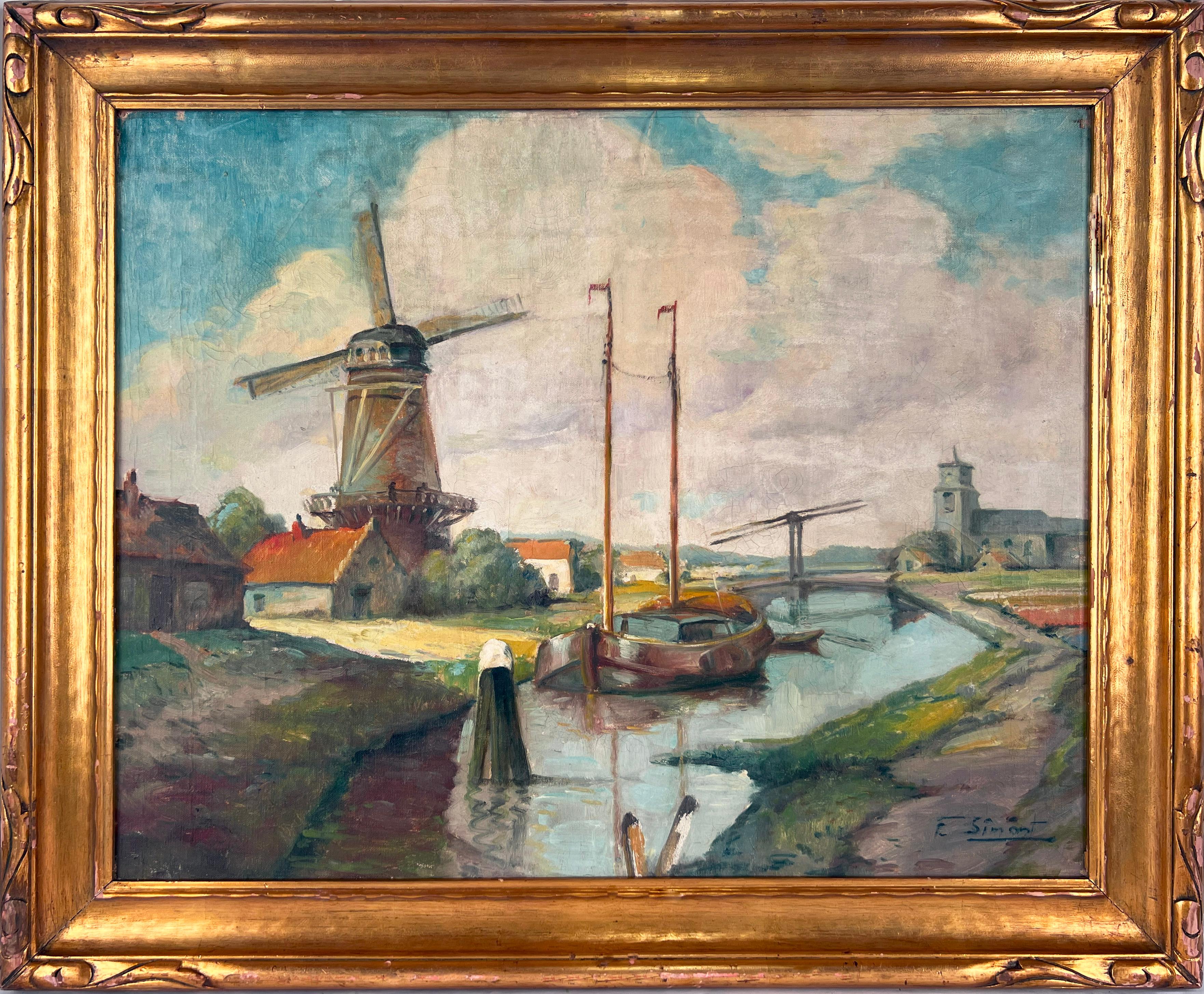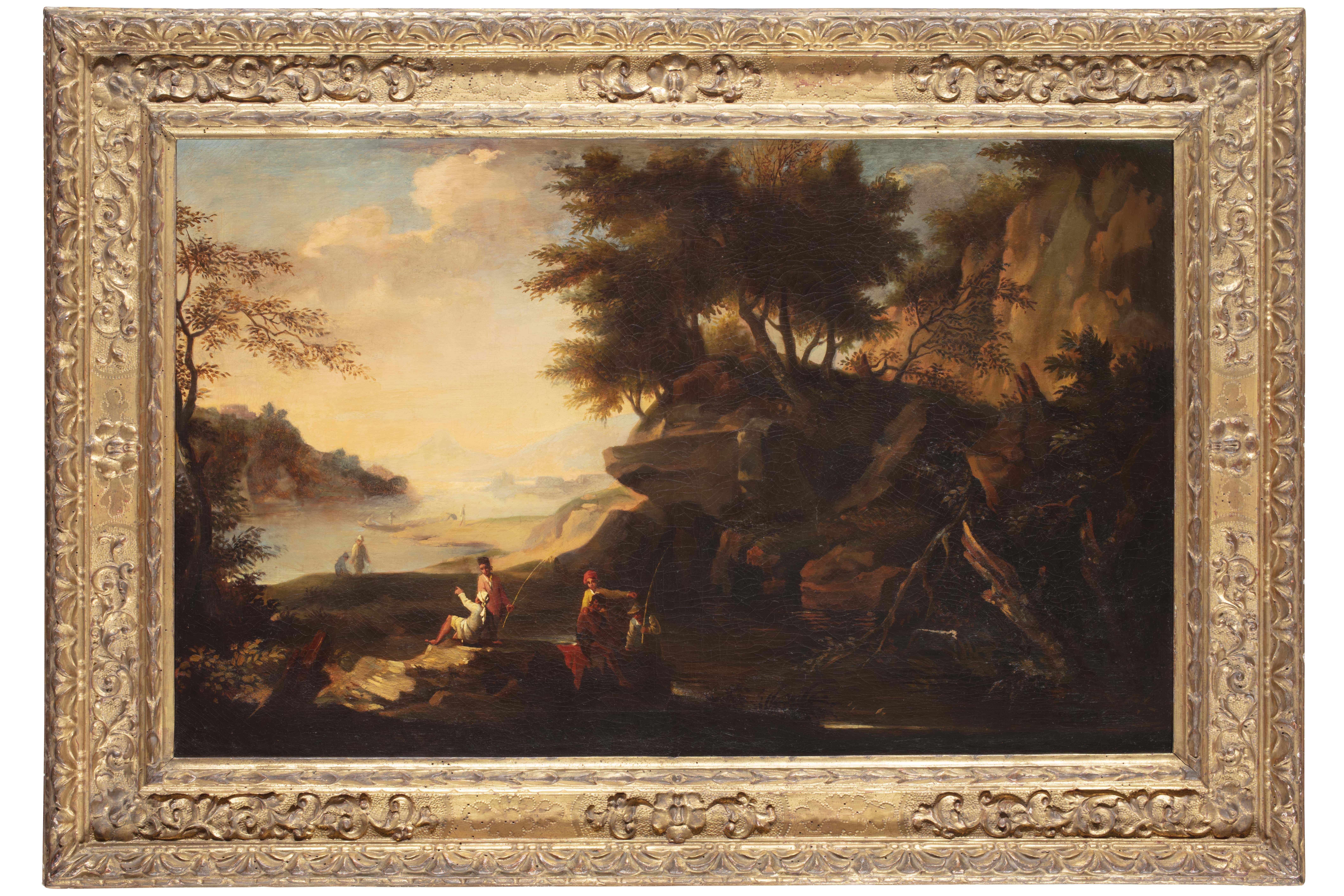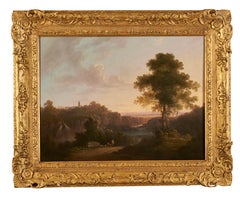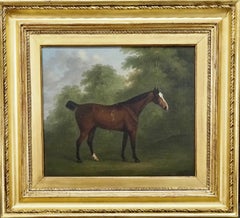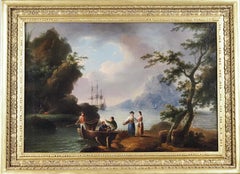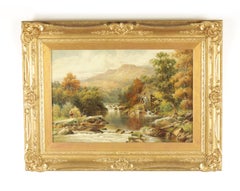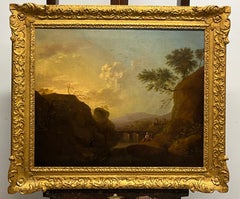
A pair of classical landscapes
View Similar Items
Want more images or videos?
Request additional images or videos from the seller
1 of 12
Adriaen van DiestA pair of classical landscapes
About the Item
- Creator:Adriaen van Diest (1655 - 1704, Dutch)
- Dimensions:Height: 32 in (81.28 cm)Width: 37 in (93.98 cm)
- Medium:
- Movement & Style:
- Period:
- Condition:
- Gallery Location:Stoke, GB
- Reference Number:1stDibs: LU446311794412
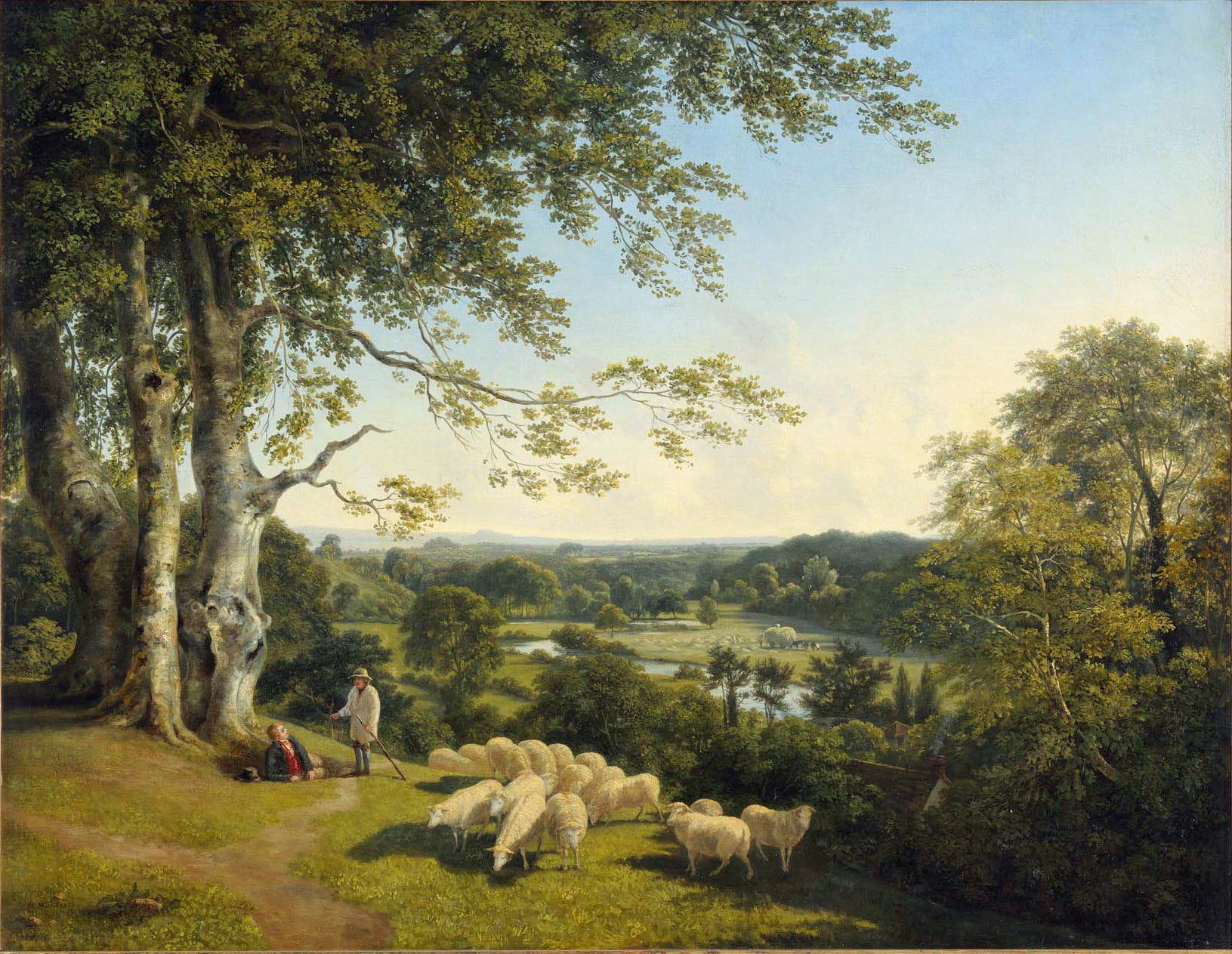
About the Seller
5.0
Recognized Seller
These prestigious sellers are industry leaders and represent the highest echelon for item quality and design.
Gold Seller
Premium sellers maintaining a 4.3+ rating and 24-hour response times
Established in 2009
1stDibs seller since 2016
166 sales on 1stDibs
Typical response time: 2 hours
Associations
LAPADA - The Association of Arts & Antiques DealersInternational Confederation of Art and Antique Dealers' AssociationsThe British Antique Dealers' Association
Authenticity Guarantee
In the unlikely event there’s an issue with an item’s authenticity, contact us within 1 year for a full refund. DetailsMoney-Back Guarantee
If your item is not as described, is damaged in transit, or does not arrive, contact us within 7 days for a full refund. Details24-Hour Cancellation
You have a 24-hour grace period in which to reconsider your purchase, with no questions asked.Vetted Professional Sellers
Our world-class sellers must adhere to strict standards for service and quality, maintaining the integrity of our listings.Price-Match Guarantee
If you find that a seller listed the same item for a lower price elsewhere, we’ll match it.Trusted Global Delivery
Our best-in-class carrier network provides specialized shipping options worldwide, including custom delivery.More From This Seller
View AllA view at Tivoli
Located in Stoke, Hampshire
John Rathbone (1750-1807)
View at Tivoli
Signed lower right
Oil on Canvas
Canvas size - 18 x 24 in
Framed size - 24 x 30 in
John Rathbone was born in Cheshire in 1750 and worked as ...
Category
18th Century Old Masters Landscape Paintings
Materials
Oil
$6,755 Sale Price
50% Off
A bay horse in a wooded landscape
Located in Stoke, Hampshire
John Nost Sartorius (London 1759-1828)
A bay horse in a wooded landscape
Signed 'J.N.Sartorius' lower right
Oil on canvas
Canvas Size - 12 x 14 in
Framed Size - 19 x 21 in
John Nost...
Category
18th Century Old Masters Animal Paintings
Materials
Oil
$7,078 Sale Price
25% Off
Fisherfolk unloading the days catch
By John Thomas Serres
Located in Stoke, Hampshire
John Thomas Serres (1759-1825)
Fisherfolk unloading the days catch
Oil on canvas
Canvas Size - 17 x 25 in
Framed Size - 22 x 30 in
John Thomas Serres, a luminary in the realm of mar...
Category
18th Century Old Masters Landscape Paintings
Materials
Oil
$9,929 Sale Price
25% Off
Sir Richard Sutton's foxhounds
By John Ferneley Senior
Located in Stoke, Hampshire
John Ferneley Snr (1782-1860 Melton Mowbray)
Sir Richard Sutton's foxhounds
signed J. Ferneley lower right
Oil on canvas
Canvas Size 16 1/8 x 20 1/2 in
Framed Size 21 x 25 in
Proven...
Category
18th Century Old Masters Animal Paintings
Materials
Oil
$8,402 Sale Price
24% Off
Smack rigged Royal yachts
Located in Stoke, Hampshire
Johann van der Hagen (1676-1745)
Smack rigged Royal yachts
Oil on canvas
Canvas Size 30 x 25 in
Frame Size 37 x 32 in
Provenance: The Parker Gallery.
Johann van der Hagen was a Dut...
Category
17th Century Old Masters Landscape Paintings
Materials
Oil
View of Matlock High Tor, Derbyshire
By Thomas Smith (b.1720)
Located in Stoke, Hampshire
Thomas Smith of Derby (1720-1767)
View of Matlock High Tor, Derbyshire
Oil on canvas
Canvas Size 25 x 30 in
Framed Size 32 x 37 in
Provenance
Private Collection, London
Thomas Smit...
Category
18th Century Old Masters Landscape Paintings
Materials
Oil
You May Also Like
Flemish 17th c., Allegory of war and peace, circa 1630, by Adriaen van Stalbemt
Located in PARIS, FR
Adriaen van Stalbemt (Antwerp, 1580-1662)
Allegory of Peace and War, circa 1620-1630
Oil on oak panel: h. 49.5 cm, l. 73.2cm (19.29 x 28.74 in)
Giltwood ...
Category
Early 17th Century Old Masters Figurative Paintings
Materials
Oil, Panel
Landscape See Paint Oil on canvas Flemish Old master 18th Century Italian Art
Located in Riva del Garda, IT
Flemish painter active in Italy in the eighteenth century
Coastal landscape of the Mediterranean with architectures and figures
Oil painting on canvas (69 x 88 cm., in frame 80 x 100 cm.)
The suggestive view proposed depicts a coastal view with a bay and the ruins of an ancient building, probably a monastery or a church, and in the background another building with a garden surrounded by high walls close to the shore.
The type of landscape, typical of the southern Italian environment, and the intimate atmosphere that welcomes the scene, attributes the authorship of the work to a landscape painter active in the eighteenth century, presumably in Italy in this period, with immediate references to the Dutch school , and in particular to the production of Jacob de Heusch and above all of Gaspar van Wittel, considered the progenitor of Italian landscape painting.
In fact, in the rendering of the architectural details, in the purity with which the buildings have been reconstructed, as well as in the atmosphere that encompasses the entire landscape, a marked correspondence to the so-called "Vanvitellian realism" can be seen: in fact, a comparison with a certain series of views which the Dutchman...
Category
18th Century Old Masters Paintings
Materials
Oil
$6,896 Sale Price
20% Off
The Mill, Dolgellau, Wales , William Henry Mander 19th century oil painting
By William Henry Mander
Located in York, GB
The Mill, Dolgellau wales William Henry Mander 19th century oil painting
A fine oil on canvas painting of The Mill, Dolgellau, by the renowned artist William Henry Mander
Dolgel...
Category
19th Century Old Masters Landscape Paintings
Materials
Oil
Galante Scene Vermeer d'Utrecht Paint Oil on canvas 18th Century Flemish Old Art
Located in Riva del Garda, IT
Flemish painter of the 18th century - Follower of Jan van der Meer, called Vermeer d'Utrecht (Schoonhoven, verses 1630 - 1692)
Courtship scene at the entrance of an inn
oil on canvas, 70 x 62 cm. (with frame 80 x 72 cm.)
This pleasant genre scene, depicting a young innkeeper conversing amiably with a gentleman as she prepares to serve him wine in a glass goblet that she still holds in her hand, is inspired by the painting made in 1653 by the Dutch painter Jan van der Meer, known as Vermeer d'Utrecht, and today kept in Paris at the Louvre Museum.
Set outside an inn or a post station, the scene illustrates the theme of seduction, with the young waitress being courted by the client, a charming traveler with a changing red cloak, who tries to charm her.
Yes, it is a work that harmoniously combines the painter's Dutch origins, with the stylistic characters learned during his training in his homeland, with the Italian-like characters learned during his trip to Italy around 1655. In Rome, in particular, he met and collaborated with various authors of the Bamboccianti school, first of all Jan Miel...
Category
18th Century Old Masters Paintings
Materials
Oil
$8,329 Sale Price
20% Off
A Lively Naval Engagement
Located in Wiscasett, ME
Oil on panel measuring 21" x 24.5," including the frame. The painting is signed in the lower right corner, but we cannot attribute the signature. Probably dating from the late 19th ...
Category
Late 19th Century Old Masters Landscape Paintings
Materials
Oil
Shipping in Stormy Waters, Attributed to Italian Artist Francesco Guardi
By Francesco Guardi
Located in Stockholm, SE
The splendour of the tragic sea
Francesco Guardi and maritime painting in Venetian art
No Venetian painter was a stranger to the sea. After all, Venice was not only one of the most prominent ports of the Mediterranean, but indeed a city literally submerged in the ocean from time to time. Curiously however, the famous Venetian school of painting showed little interest in maritime motifs, favouring scenes from the iconic architecture of the city rather than seascapes. That is why this painting is a particularly interesting window into not only the painter Francesco Guardi himself – but to the significance of the element of water in art history, in absence as well as in the centre of attention.
Whether it be calm, sunny days with stunning views of the palaces alongside the canals of Venice or – more rarely – stormy shipwrecking tragedies at sea, water as a unifying element is integral to the works of painter Francesco Guardi (1712–1793). During his lifetime, Venetian art saw many of its greatest triumphs with names like Tiepolo or Canaletto gaining international recognition and firmly establishing Venice as one of the most vibrant artistic communities of Europe. While the city itself already in the 18th century was something of an early tourist spot where aristocrats and high society visited on their grand tour or travels, the artists too contributed to the fame and their work spread the image of Venice as the city of romance and leisure to an international audience, many of whom could never visit in person.
Still today, the iconic image of Venice with its whimsical array of palaces, churches and other historic buildings is much influenced by these artists, many of whom have stood the test of time like very well and remain some of the most beloved in all of art history. It was not primarily subtility, intellectual meanings or moral ideals that the Venetian art tried to capture; instead it was the sheer vibrancy of life and the fast-paced city with crumbling palaces and festive people that made this atmosphere so special. Of course, Venice could count painters in most genres among its residents, from portraiture to religious motifs, history painting and much else. Still, it is the Vedutas and views of the city that seems to have etched itself into our memory more than anything else, not least in the tradition of Canaletto who was perhaps the undisputed master of all Venetian painters.
Born into his profession, Francesco lived and breathed painting all his life. His father, the painter Domenico Guardi (1678–1716) died when Francesco was just a small child, yet both he and his brothers Niccolò and Gian Antonio continued in their fathers’ footsteps. The Guardi family belonged to the nobility and originated from the mountainous area of Trentino, not far from the Alps. The brothers worked together on more challenging commissions and supported each other in the manner typical of family workshops or networks of artists. Their sister Maria Cecilia married no other than the artist Giovanni Battista Tiepolo himself, linking the family to the most renowned Venetian name of the time. During almost a decade, Guardi worked in the studio of Michele Giovanni Marieschi, sometimes simply known as Michiel, a painted similar in both style and motif. Canaletto is, however, the artist Guardi is most often compared to since they shared a mutual fascination for depicting the architecture and cityscape of Venice.
During the course of his career, Guardi tried his hand in many different genres. He was as swift in painting landscapes, Vedutas of Venice, sacred motifs, interiors and architectural compositions as he was in a number of other motifs. His style is typical of the Venetian school but also distinct and personal once we look a little closer. There is an absolute certainty in the composition, the choice of which sometimes feels like that of a carefully calculated photograph – yet it is also very painterly, in the best sense of the word: fluid, bold, sensitive and full of character. The brushwork is rapid, intense, seemingly careless and extraordinarily minute at the same time; fresh and planned in a very enjoyable mixture. His interiors often capture the breath-taking spacious glamour of the palaces and all their exquisite decor. He usually constructed the motif through remarkably simple, almost spontaneous yet intuitively precise strokes and shapes. The result was a festive, high-spirited atmospheric quality, far away from the sterile and exact likeness that other painters fell victim to when trying to copy Canaletto.
The painting here has nothing of the city of Venice in it. On the contrary, we seem to be transported far away into the solitary ocean, with no architecture, nothing to hold on to – only the roaring sea and the dangerous cliffs upon which the ships are just moments away from being crushed upon. It is a maritime composition evoking both Flemish and Italian precursors, in the proud tradition of maritime painting that for centuries formed a crucial part of our visual culture.
This genre of painting is today curiously overlooked, compared to how esteemed and meaningful it was when our relationship to the sea was far more natural than it is today. When both people and goods travelled by water, and many nations and cities – Venice among them – depended entirely on sea fare, the existential connection to the ocean was much more natural and integrated into the imagination. The schools and traditions of maritime art are as manifold as there are countries connected to the sea, and all reflect the need to process the dangers and wonders of the ocean.
It could symbolize opportunity, the exciting prospects of a new countries and adventures, prospering trade, beautiful scenery as well as war and tragedy, loss of life, danger and doom. To say that water is ambivalent in nature is an understatement, and these many layers were something that artists explored in the most wondrous ways. Perhaps it takes a bit more time for the modern eye to identify the different nuances and qualities of historic maritime paintings, they may on first impression seem hard to differentiate from each other. But when allowing these motifs to unfold and tell stories of the sea in both fiction and reality – or somewhere in between – we are awarded with an understanding of how the oceans truly built our world.
In Guardi’s interpretation, we see an almost theatrically arranged shipwrecking scene. No less than five ships are depicted right in the moment of utter disaster. Caught in a violent storm, the waves have driven them to a shore of sharp cliffs and if not swallowed by the waves, crushing against the cliffs seems to be the only outcome. The large wooden ships are impressively decorated with elaborate sculpture, and in fact relics already during Guardi’s lifetime. They are in fact typical of Dutch and Flemish 17th century ships, giving us a clue to where he got the inspiration from. Guardi must have seen examples of Flemish maritime art, that made him curious about these particular motifs. One is reminded of Flemish painters like Willem van de Velde and Ludolf Backhuysen, and this very painting has indeed been mistakenly attributed to Matthieu van Plattenberg...
Category
18th Century Old Masters Landscape Paintings
Materials
Canvas, Oil
$46,421 Sale Price
32% Off
Free Shipping
Recently Viewed
View AllMore Ways To Browse
17th C Dutch Portraits
17th C Dutch Portraits
Sir Peter Lely
Antique Wainscoting
Antique Wainscotting
Van Diest
Antique Frames Canada
19th Century Landscapes English Style
Antique Oil Painting L
Boston Watch
Original Dune
Original Irish Oil Paintings
Painting Boats At Dock
Pastel Sunset
T Denver
Texas Hill Country Art
Alex Brown Painting
Antique Early American School

